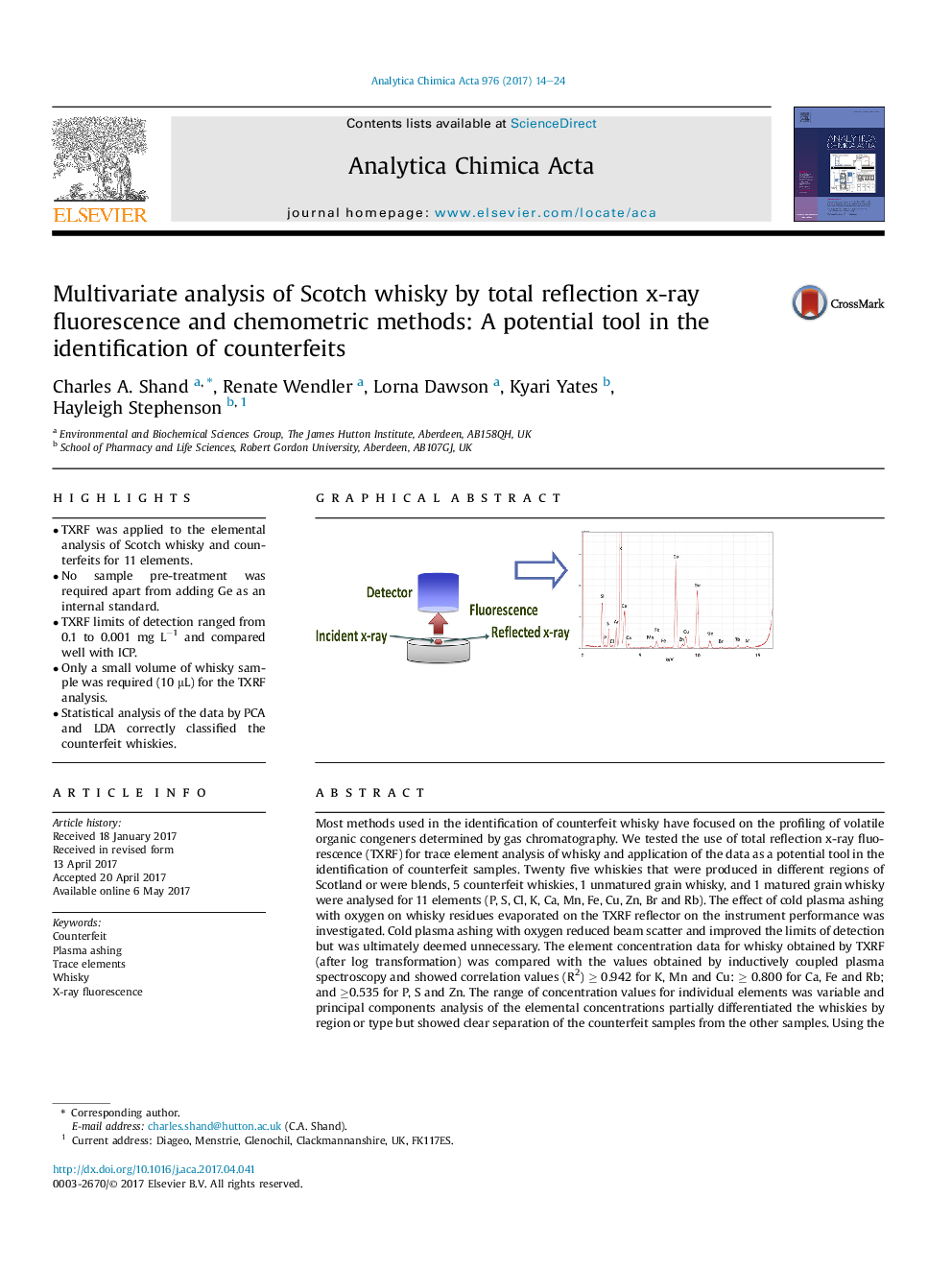| Article ID | Journal | Published Year | Pages | File Type |
|---|---|---|---|---|
| 5130780 | Analytica Chimica Acta | 2017 | 11 Pages |
â¢TXRF was applied to the elemental analysis of Scotch whisky and counterfeits for 11 elements.â¢No sample pre-treatment was required apart from adding Ge as an internal standard.â¢TXRF limits of detection ranged from 0.1 to 0.001 mg Lâ1 and compared well with ICP.â¢Only a small volume of whisky sample was required (10 μL) for the TXRF analysis.â¢Statistical analysis of the data by PCA and LDA correctly classified the counterfeit whiskies.
Most methods used in the identification of counterfeit whisky have focused on the profiling of volatile organic congeners determined by gas chromatography. We tested the use of total reflection x-ray fluorescence (TXRF) for trace element analysis of whisky and application of the data as a potential tool in the identification of counterfeit samples. Twenty five whiskies that were produced in different regions of Scotland or were blends, 5 counterfeit whiskies, 1 unmatured grain whisky, and 1 matured grain whisky were analysed for 11 elements (P, S, Cl, K, Ca, Mn, Fe, Cu, Zn, Br and Rb). The effect of cold plasma ashing with oxygen on whisky residues evaporated on the TXRF reflector on the instrument performance was investigated. Cold plasma ashing with oxygen reduced beam scatter and improved the limits of detection but was ultimately deemed unnecessary. The element concentration data for whisky obtained by TXRF (after log transformation) was compared with the values obtained by inductively coupled plasma spectroscopy and showed correlation values (R2) â¥Â 0.942 for K, Mn and Cu: ⥠0.800 for Ca, Fe and Rb; and â¥0.535 for P, S and Zn. The range of concentration values for individual elements was variable and principal components analysis of the elemental concentrations partially differentiated the whiskies by region or type but showed clear separation of the counterfeit samples from the other samples. Using the principal component scores of the elemental concentration data, linear discriminant analysis also distinguished the counterfeits from the other samples.
Graphical abstractDownload high-res image (152KB)Download full-size image
